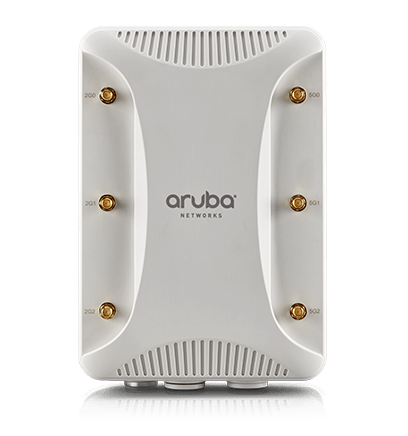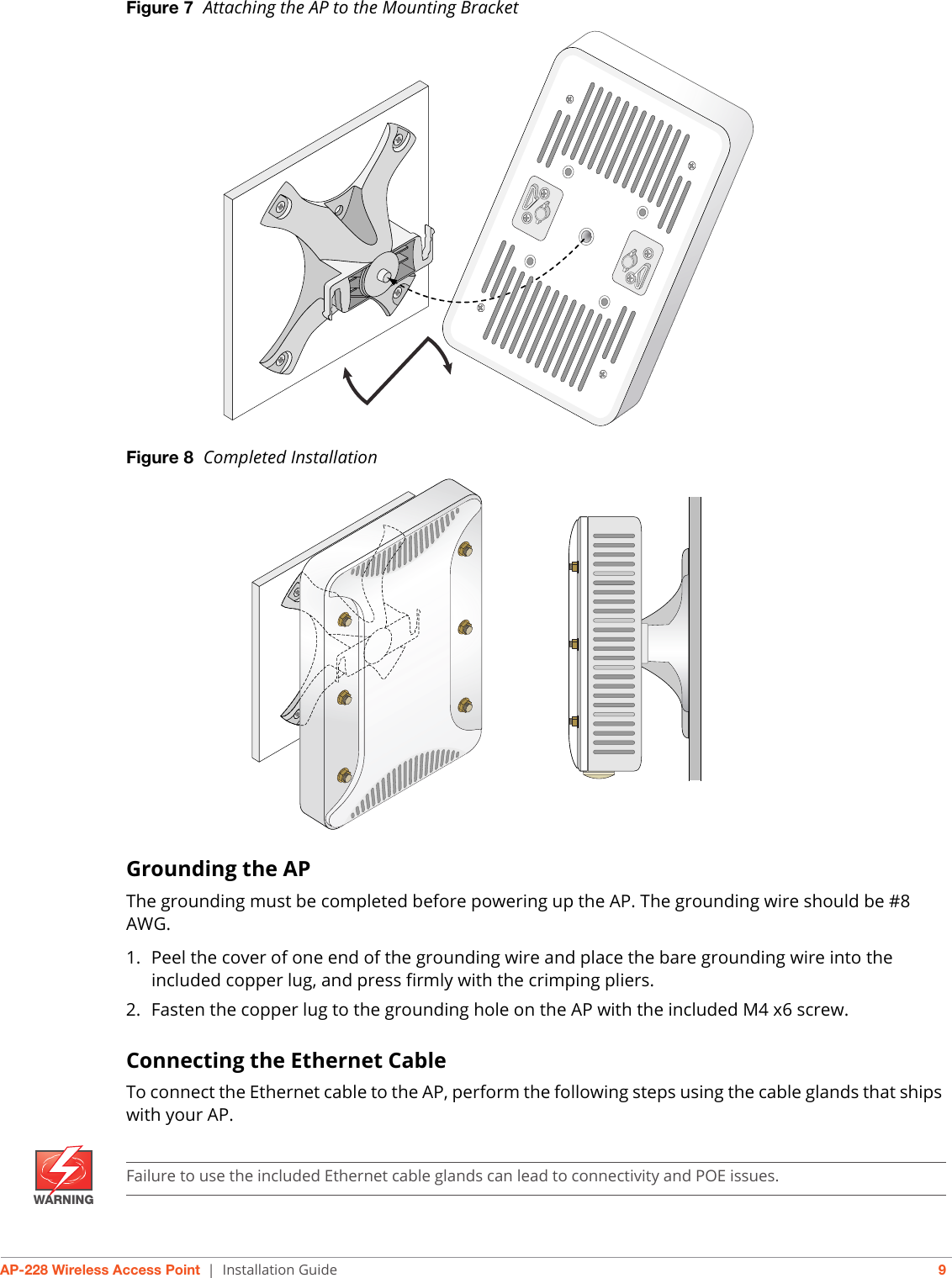AP Aruba 228: Improve WiFi performance in harsh indoor environments
Tired of APs (Access Point) that do not meet your demands for wireless connection in high-complexity indoor locations? What to do to achieve better WiFi performance in harsh environments for connection in places such as closed warehouses, industrial freezers or large concurrence sites such as stadiums?
Aruba Networks, the prestigious wireless network company, has the solution through its high-performance AP-228: A high-performance Access Point that offers Wi-Fi performance to 802.11ac in harsh indoor environments.
A P-228 has a maximum data rate of 1.3 Gbps in the 5 GHz band and 600 Mbps in the 2.4 GHz band. Aruba 228 APs are three-times faster than 802.11n APs and provide performance similar to a wired connection.
This AP includes ClientMatch technology, which eliminates sticky clients by continuously gathering session performance metrics from mobile devices. This information is used to steer each mobile device to the best AP and radio on the WLAN.
ClientMatch technology is proactive and has proven to be very effective in optimizing Wi-Fi client performance as users roam. In the event that a mobile device moves out of range of an AP or RF interference impedes performance, ClientMatch automatically steers it to a better AP.
The AP-228 of Aruba Networks allow you to make policy enforcement management for individual Microsoft Lync media on the same device, including encrypted videoconferencing, voice, chat and desktop sharing.
In addition to being designed for harsh environments, these robust Access Point are enabled to protect from the weather with sealed connector interfaces that lock out dust and moisture. They also offer an aggregate throughput of 1.9 Gbps by having EtherChannel link aggregation on two Gigabit Ethernet.
AP-228 TECHNICAL SPECIFICATIONS
- 4-GHz (600 Mbps max) and 5-GHz (1.3 Gbps max) radios, each with 3×3 MIMO and three combined, diplexed external antenna connector.
- AP type: Indoor, dual radio, 5 GHz 802.11ac and 2.4 GHz 802.11n-In addition to 802.11n data rates, the 2.4-GHz radio supports 802.11ac data rates using 256-QAM modulation. This gives TurboQAM-enabled clients a 33% boost above the maximum supported data rate. Software-configurable dual radio supports 5 GHz and 2.4 GHz. 3×3 MIMO with three spatial streams and up to 1.3 Gbps wireless data rate.
- Supported frequency bands:
2.4000 GHz to 2.4835 GHz
5.150 to 5.250 GHz
5.250 to 5.350 GHz
5.470 to 5.725 GHz
5.725 to 5.850 GHz
- Dynamic frequency selection (DFS) optimizes the use of available RF spectrum
- Supported radio technologies:
802.11b: Direct-sequence spread-spectrum (DSSS)
802.11a/g/n/ac: Orthogonal frequency-division multiplexing
802.11n/ac: 3×3 MIMO with up to three spatial streams
- Supported modulation types:
802.11b: BPSK, QPSK, CCK
802.11a / g / n: BPSK, QPSK, 16-QAM, 64-QAM
802.11ac: BPSK, QPSK, 16-QAM, 64-QAM, 256-QAM
- Transmit Power: Configurable in increments of 0.5 dBm
- Maximum (aggregate, conducted total) transmit power (limited by local regulatory requirements):
2.4-GHz band: +28 dBm (23 dBm per chain)
5-GHz band: +28 dBm (23 dBm per chain)
- Advanced cellular coexistence (ACC) feature to effectively deal with interference from cellular systems. Maximum ratio combining (MRC) for improved receiver performance. Cyclic delay diversity (CDD) for improved downlink RF performance. Short guard interval for 20-MHz, 40-MHz and 80-MHz channels. Space-time block coding (STBC) for increased range and improved reception. Low-density parity check (LDPC) for high-efficiency error correction and increased throughput.
- Transmit beam-forming ( TxBF ) for increased reliability in signal delivery
- Supported data rates (Mbps):
802.11b: 1, 2, 5.5, 11
802.11a/g: 6, 9, 12, 18, 24, 36, 48, 54
802.11n: 6.5-450 (MCS0-MCS23)
802.11ac: 6.5-1.300 (from MCS0 to MCS9, NSS = 1 to 3)
- 11n high-throughput (HT) support: HT 20/40
Compatibility with 802.11ac very high throughput (VHT) support: VHT 20/40/80. 802. 802.11n/ac packet aggregation: A-MPDU, A-MSDU
- POWER
Worst-case power consumption from the AP: 23W
Power sources sold separately
Power over Ethernet (PoE+): 802.3at-compliant
- OTHER INTERFACES
Two 10/100/1000BASE-T Ethernet network interfaces (RJ-45)
Auto-sensing link speed and MDI/MDX
Load balancing support to achieve platform throughput greater than 1 Gbps
PoE-PD: 802.3at PoE+
You already know this! Aruba Networks AP-228 is an effective alternative to solve deficiencies of wireless signal in harsh locations and GlobeNet International Corp knows how to help you.
Our company has a certified alliance with Aruba Networks, so we can help you with the installation and we also offer you highly-qualified system administration, maintenance, and after-sales support services.
Remember that you can contact us 24 hours a day, seven days a week!

